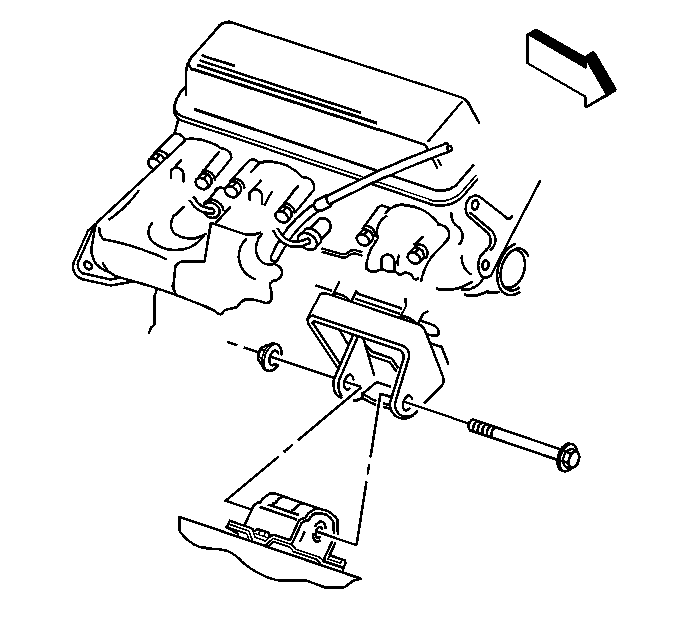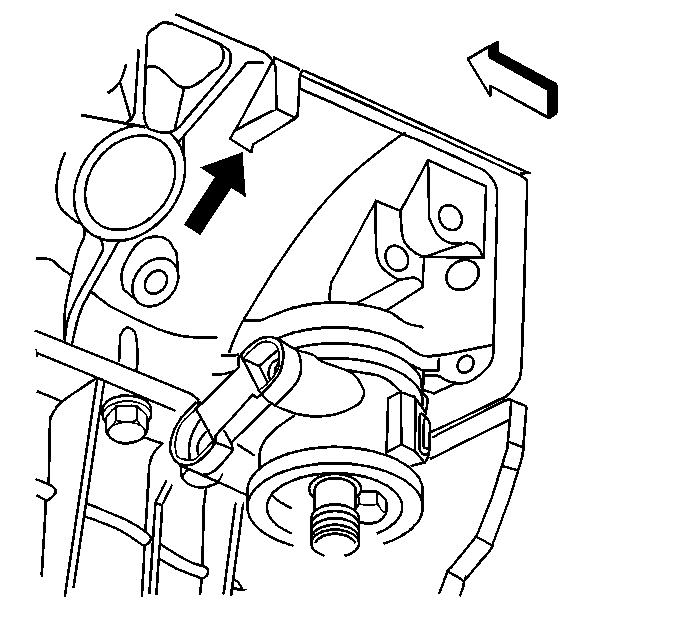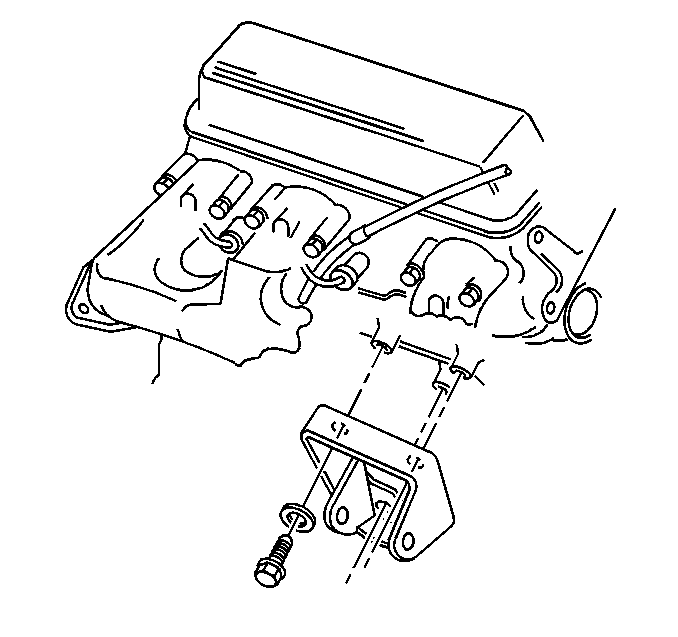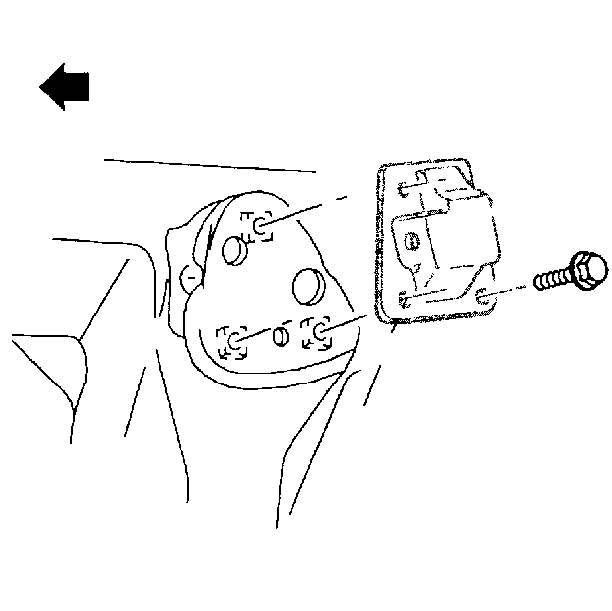Engine Mount Replacement Front
Removal Procedure
- Disconnect the battery negative cable. Refer to Battery Replacement in Engine Electrical.
- Raise the vehicle and install safety stands. Refer to Lifting and Jacking the Vehicle in General Information.
- In order to remove the right side engine mount perform the following:
- Remove the engine mount through-bolt and nut for the side being replaced.
- Using a jack on the square tab (left side shown) at the rear of the engine block, raise the engine only enough to remove the engine mount. In order to access the square tab on the right side remove the starter.
- Remove the bolts for the engine mount bracket to the engine.
- Remove the engine mount bracket.
- Remove the bolts for the engine mount to the frame.
- Remove the engine mount.

Notice: Broken or deteriorated mounts can cause misalignment and destruction of certain drive train components. When a single mount breaks, the remaining mounts are subjected to abnormally high stresses.
| 3.1. | Remove the right front tire. Refer to Tire and Wheel Removal and Installation in Tire and Wheels. |
| 3.2. | Remove the right fender wheelhouse extension. Refer to Wheelhouse Extension Replacement in Body Front End. |
| 3.3. | Remove the starter. Refer to Starter Motor Replacement in Engine Electrical. |

Notice: When raising or supporting the engine for any reason, do not use a jack under the oil pan, any sheet metal, or the crankshaft pulley. Lifting the engine in an unapproved manner may cause component damage.

Access the upper two bolts for the right engine mount bracket through the fender wheelhouse.

Installation Procedure
- Install the engine mount to the frame.
- Install the engine mount to the frame bolts.
- Install the engine mount bracket to the engine.
- Install the engine mount bracket bolts.
- Lower the engine.
- Install the engine mount through- bolt and the nut.
- Install the starter. Refer to Starter Motor Replacement in Engine Electrical.
- Install the right fender wheelhouse extension. Refer to Wheelhouse Extension Replacement in Body Front End.
- Install the right front tire. Refer to Tire and Wheel Removal and Installation in Tire and Wheels.
- Lower the vehicle.
- Connect the batter negative cable. Refer to Battery Replacement in Engine Electrical.

Notice: Use the correct fastener in the correct location. Replacement fasteners must be the correct part number for that application. Fasteners requiring replacement or fasteners requiring the use of thread locking compound or sealant are identified in the service procedure. Do not use paints, lubricants, or corrosion inhibitors on fasteners or fastener joint surfaces unless specified. These coatings affect fastener torque and joint clamping force and may damage the fastener. Use the correct tightening sequence and specifications when installing fasteners in order to avoid damage to parts and systems.
Tighten
| • | Tighten the engine mount bolts for Four Wheel Drive vehicles to 59 N·m (44 lb ft). |
| • | Tighten the engine mount bolts for RWD vehicles to 47 N·m (35 lb ft). |

Tighten
Tighten the engine mount bracket bolts to 55 N·m (41 lb ft).

Tighten
Tighten the nuts to 68 N·m (50 lb ft).
